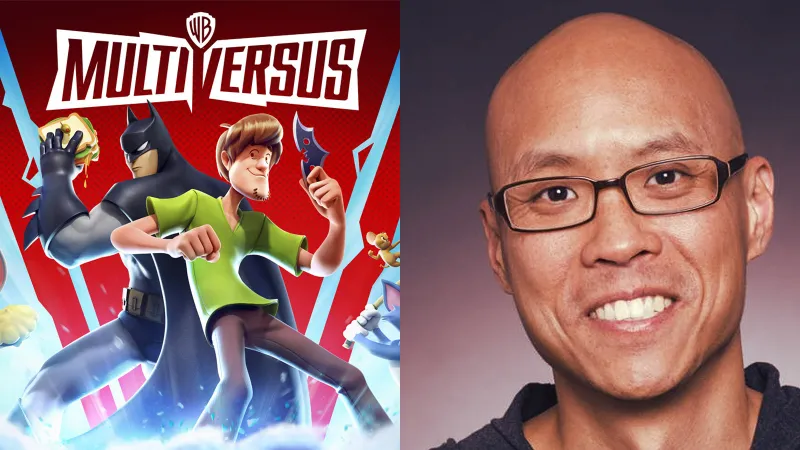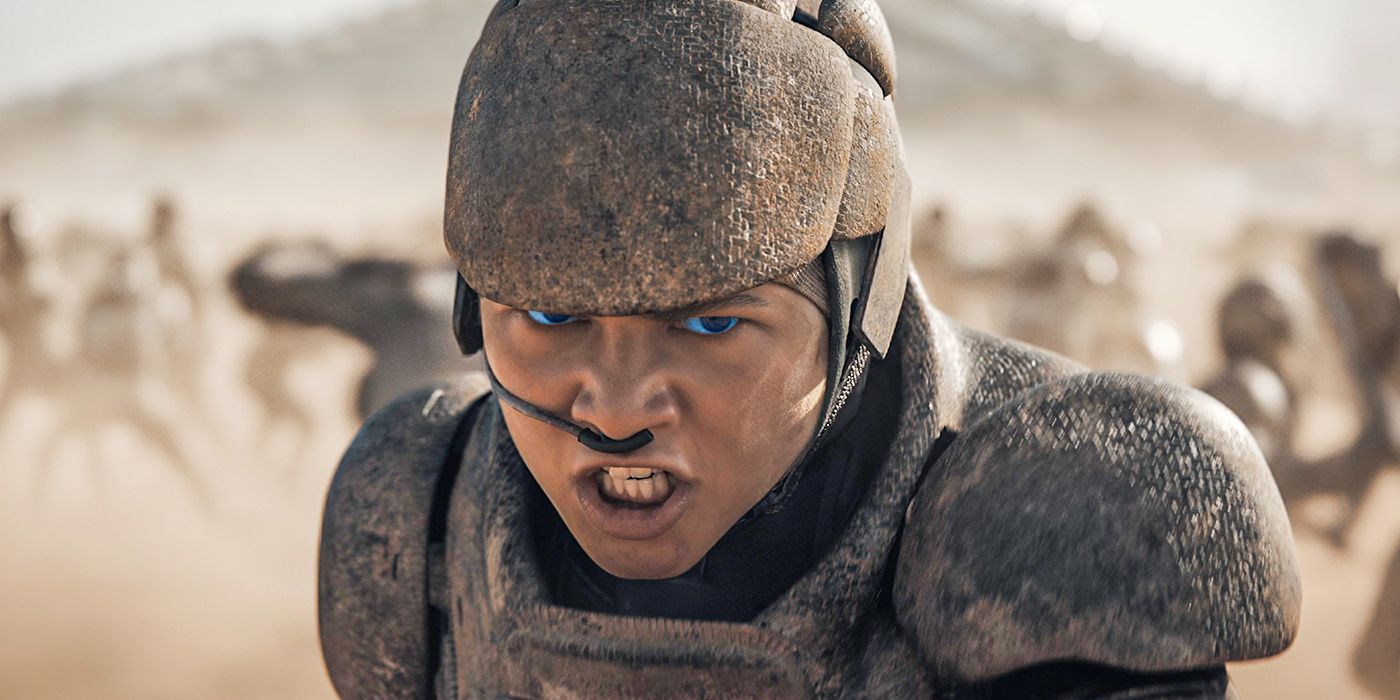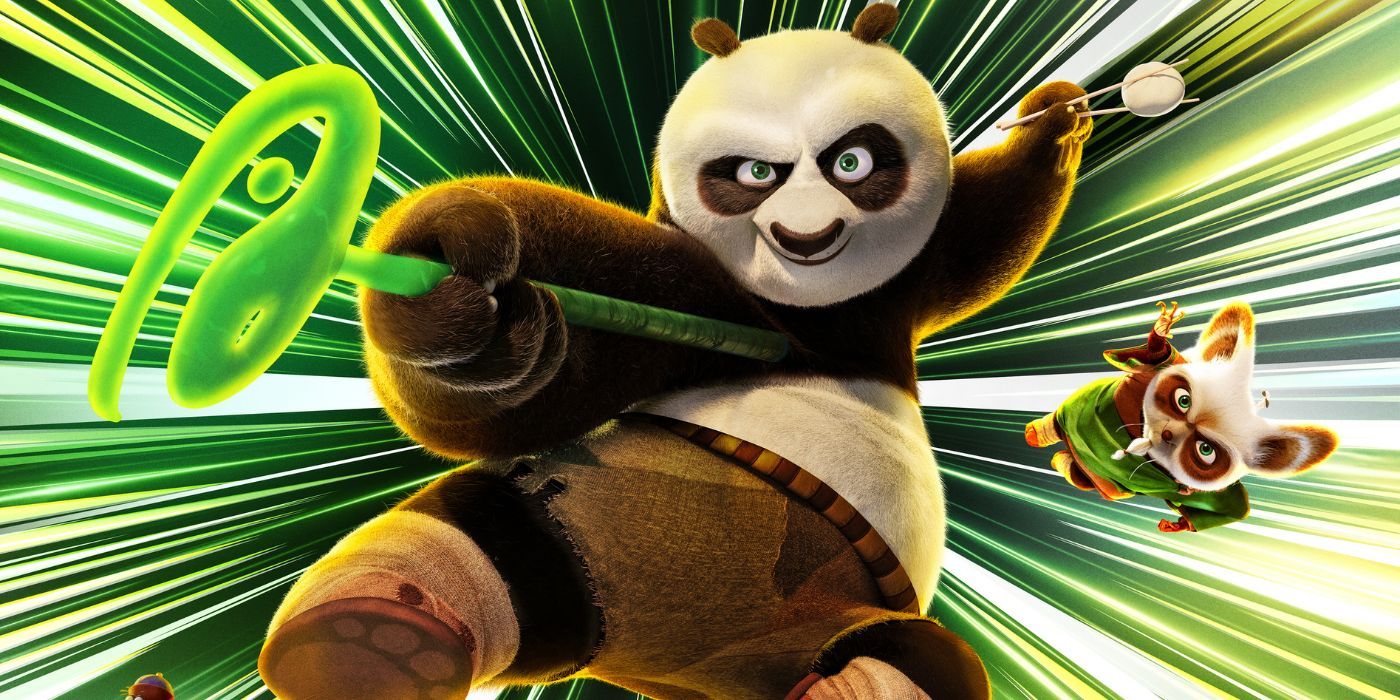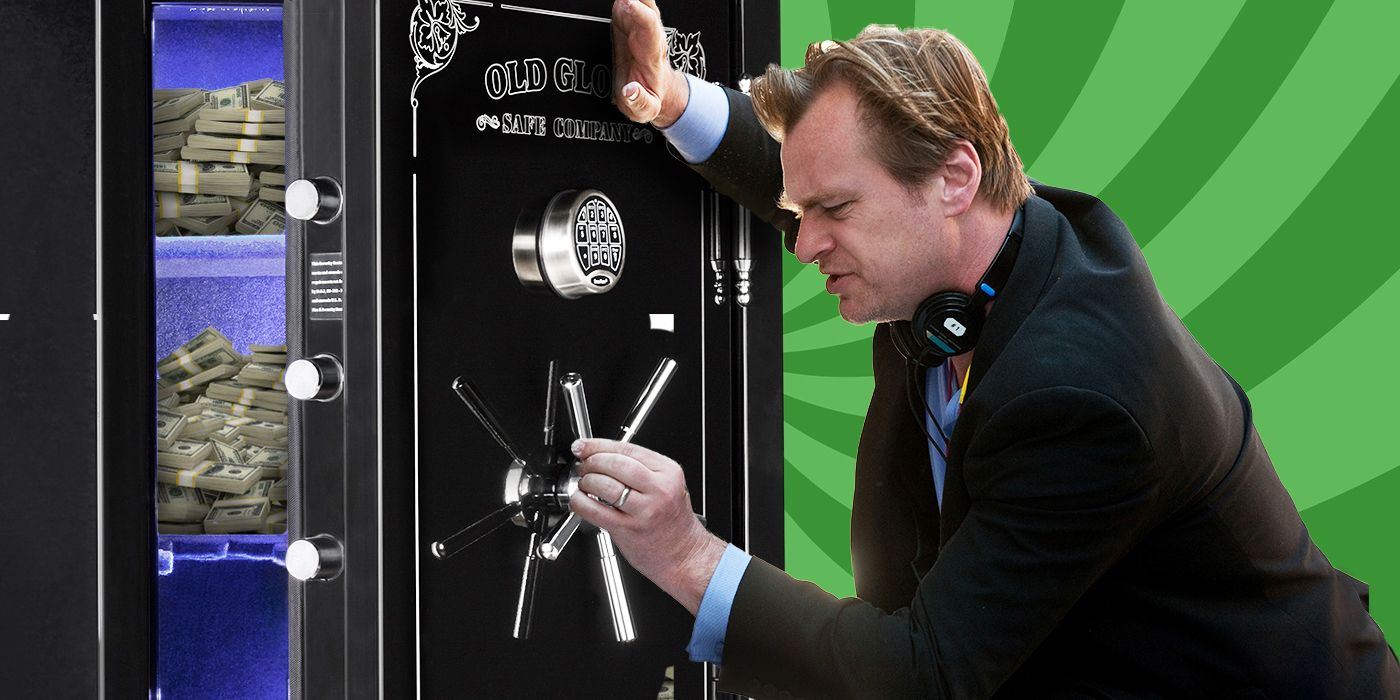
During the recent closed alpha test, we sat down to talk about all things MultiVersus with the game’s director, Tony Huynh, from Player First Games. In this interview, we talk with Tony about what MultiVerus is, how it is to work with Warner Bros on the project, philosophies on its core combat designs and business models, and much more.
Game Informer: Can you tell us about MultiVersus? What’s the quick pitch of it?
Tony Huynh: MultiVersus is a cooperative platform fighter. It’s free to play. And it’s a game that has a lot of the barriers removed, that’s really easy to pick up, but also a really smooth, gradual mastery curve into the game. Its focus is on cooperative team-based gameplay. So from the ground up, everything about it is team-based, working with your ally, all the abilities and moves are based around team play as well as having a huge iconic character cast of really awesome characters. We spent a lot of time on making the characters play the way that you think that they would play. We try to support every single input device, like keyboards and controllers. In an effort to remove all barriers, we also have a lot of resources poured into making really good online play through dedicated server rollback netcode. In a nutshell, that is what MultiVersus is; it’s a very cooperative focused, social-focused platform fighter that I think everybody can pick up and play and then also invest thousands of hours, like I have, into it. [laughs]
GI: One of the special things about this game is its co-op focus. It is a 2v2 fighting game at heart. Can you talk about the decision in going to a 2v2 game as opposed to focusing on solo and free for all modes that are still present?
TH: I’m going to give you a little bit of a long-winded answer, but just a little bit of history behind that decision. My history is that I am a massive fighting game player. And I’m a combat designer by trade. It’s the reason why I became a combat designer, it’s because of these games. Traditionally they have been 1v1 focused, and singles focused. I also play a lot of other games; I play games outside of the fighting game genre, like MOBAs and shooters. And the reason why I was discovering why I wasn’t playing just fighting games all the time was because I like playing with my friends. And I just think that playing with my friends is a really good and fun experience, right? It’s a reason why most of my social circle and friends are based on people I’ve met online, and people I’ve met playing games. And the other thing is these games are extremely, extremely important to me. They’ve changed my life and changed my career, and gave me a career. So I want a lot of players to be able to experience the way that I experienced it growing up. And part of that is great code and being able to pick up and play with other players, but also playing with somebody and having a shared objective. And that’s something I think that I was missing, and why I was playing these other [games].
So a huge part of it is making sure that we can bring this genre to a lot more players, but also that experience of working with somebody else, and playing with somebody else, and being of one mind [was] what I was missing, and what made a lot of sense to bring in. It wasn’t an easy decision. Because the thing is, we fully embraced this concept, but it changes everything from the ground up. Every single decision that you’re making, all the mechanics on the characters, how they play, how do they impact the other character, including all the macro levels, meta systems and everything else, and even the strategic gameplay around perks, affects allies and then selection of perks actually impacting your ally. Everything in the game is tied around this concept. Steven doesn’t just shield himself, he shields his allies at the same time. Wonder Woman has to pay attention to where her ally is, so she can dash to them, and then protect them and position herself correctly. So, there’s just a lot of opportunity for teamwork and team play, that actually fundamentally changes up how the gameplay actually works.
GI: You mentioned that you brought on some ideas from outside of fighting games? Do you think that fighting games could learn more from other genres of games to boost their popularity and boost their playability?
TH: There’s a lot of lessons from everywhere you can take. It depends on what the goals are, and our goals are: how do we remove barriers for the game, and how do we get as many players in playing as possible? I think [it’s] being well-rounded developers and understanding a lot of different ways to play, basically. Because the thing is, you really want to be careful about making the same game over and over again, and a lot of that has to come from understanding multiple genres and understanding what you like and what is possible. And good ideas come from everywhere. So we should pay attention. We [shouldn’t] just throw [something] out because of because it hasn’t been done before. What we found is a lot of players that aren’t in the fighting game community, or play platform fighters, really enjoy the game because it’s very easy to pick up. But also a big part of [MultiVersus] will also be free to play, and a lot of players can just try the game. And it’s on us, honestly, if they stick around. If they liked the game, it’s on us. If we don’t make a great game for them, they’re not going to stick around. So this is the true test of are we making the correct game, are we making a game that players are going to enjoy and continue to play? And then also, because it’s free to play, a lot of players can try it out. There’s cross-play as well. So, players can come on and they can play with their friends. We’re trying to remove as many barriers as possible.
But it helps us out in a bunch of different ways. The best way, and the best experience, for playing these types of games is to play against somebody that is fairly equal in skill. And, to do that, it’s very important that a lot of players are able to play the game. We can matchmake you based off of your skill, so you can have a really great experience and a smooth kind of mastery curve all the way up. That’s part of the reason why we’ve done the things that we have. We don’t just do things here at Player First Games. We’re very deliberate about our decision-making for what we’re trying to do. And it isn’t geared around any sort of nefarious thing. It’s based around, “we’re trying to achieve this goal.” We’re trying to provide this experience to as many players as possible and introduce his genre to as many people as possible. And then how do we do that? And how do we give everyone the best experience possible? Also, partnering with WB helps us reach a lot more players as well because of their awesome history and the history of their characters that they have and being able to reach that audience as well and making a game that they can get into.
GI: The game is free to play; sometimes that has certain expectations that people put on free-to-play games. With MultiVersus, are you looking to make most things unlockable by playing versus spending money? I’m guessing there are going to be ways of spending money on the game to unlock cosmetics. What does the monetization model look like and how do you expect players to interact with it?
TH: I can talk about the philosophy that we have, which is there’s no pay to win here. In fact, anything that grants any sort of benefit like perks, for instance, they can only be earned by playing the game. Spending enough money on the game shouldn’t give you an advantage. That’s the overarching thing about the game. What I’ve discovered in my past is that if players really enjoy the game, they’ll spend money. That’s kind of the bottom line, and I think that our cosmetics are really awesome. Ring out effects and everything else like they’re, [in] my personal opinion, I think they’re worth spending money on because they’re so cool. So, that’s kind of the model that we’re using. We just want players to have a really great experience, and that’s it.
GI: In the alpha right now, we are experiencing the battle pass and some of the other progressions systems. There’s a lot in here! Each character levels up to have their own unlocks, etc. Are you looking at doing a seasonal structure for these Battle Passes, and what kind of content are we looking at if you do roll out content seasonally?
TH: We want to surprise and delight players. That’s our number one goal as a developer, right? So, I think that’ll be a mix of content drops, as well as seasonal [content]. The current plan is not to just pack everything into seasons, but it is also to have some surprises thrown in periodically. I think that the seasonal structure is fairly healthy in terms of how positive that’s received by players. Because it also gives us opportunities like check-in points where we want to address specific issues or making sure the game is healthy and making larger changes in a seasonal structure. But also dropping really awesome new content, maps, modes, characters, ways to play the game, and new features. I also think that we will be dropping that stuff periodically as well outside of the seasonal structure.
GI: How many characters are you looking at for launch? We currently have 15 playable in the alpha build.
TH: 16 have been announced. Iron Giant, [who] also got announced, will be appearing in the open beta. Taz is the latest addition, and Velma was also playable in the last tech test, so she’ll be playable in this one as well. But yeah, in terms of characters, it’s really important for us to make sure that every addition really adds something to the roster. Every roster spot is really important, because of dev resources required and IP approvals. There’s a lot of things you have to go through in order to make a character and put it out there. Every character we add, there has to be an opportunity to make sure that, from the development side, we’re able to make a character that plays the way that you think it should play, but also pushes some envelope in the game as well. So, Iron Giant is going to be our first colossus-sized character; it’s going to be awesome. I think a piece of this is that we want to make sure that we on the dev side can be creative as well, and be able to see opportunities for characters that, like Velma, you wouldn’t expect to be on a fighting game. It’s not like, if you put a poll out, she wouldn’t be very high up there because she’s well known, but she’s not thought of as a fighter. But from our development team, we just had the inspiration of, “what if we made a character that didn’t know physical attacks, she just used words of encouragement, and sass, and science, and solving mysteries, including gathering clues, to win. And so that was just an opportunity. We were like, “Okay, we have to do this.” So, we did it. We will continuously add characters. There will be a regular cadence in which they [are] added. I hope to have a really large roster of characters, and we have a lot to choose from. Also, we want to reach out to the community and see what they want and tie that into this as well, but the main thing is how do we delight and surprise players all the time? So, there will be surprises like Velma, and that will continue. But more important than our large roster is that each character brings something, that we’re doing something that is pushing the envelope in some way. I’d rather have a uniquely playing roster that fills a lot of different ways to play the game than having a really large roster. But that being said, we’re going to try to make a really large roster that plays very uniquely and pushes the envelope with every character.
GI: How has it been working with Warner Brothers? And have they been open to your ideas for using specific properties? Or were there any that have been off-limits or harder to get at than you expected?
TH: I’m going to hit this at a high level, I think. But at a high level, it’s been a dream, quite frankly. When we first started this, we thought about partners and also about how do we realize this vision that we have. A huge part of that is the resources that Warner has. Not just the characters, but also on the development side, and on the back end, and all the support they can give us in terms of testing the game, making sure the game is in a good spot, and we can validate what we’re trying to do. So a lot of that stuff has been absolutely amazing. It’s been best case scenario. I was like, “this is the best case scenario,” and it’s been way better than that. The general thing is, we come up with the ideas, and we go, “Can we do this?” And the answer is very often just, “Yes.” There [are] IP approvals and IP holders on each of the different characters and different hoops and obstacles to jump through. But It’s been really smooth. It’s surprisingly smooth. Again, I couldn’t have hoped for a better partner. It’s been really great.
GI: Do you have plans for larger game sizes than the 2v2 or four-player matches? Are there technical hurdles with your rollback netcode that may hold that back?
TH: The way that we’ve done things, we’ve gone on a very different route which is server based, dedicated, on rollback netcode, which is not usually done, because it’s very expensive. The way that we think about things is what is the best experience for players? And we thought that this approach was the best. But that also gives us a lot of flexibility on what we do in terms of team sizes, or whatnot. So, there’s always challenges with any sort of number change like 3v3 or 4v4, but I think that they’re very surmountable the way that we’ve set things up to allow us to do those types of things. It’s just a matter of investing the amount of time to create the content and figure it out and make sure that’s a great experience for players. And there will be a lot of new modes coming out. I can promise some surprising stuff, too.
GI: Speaking of modes, do you have any sort of Story Mode planned since we’re mashing all these all of these brands together?
TH: There will be content that you can enjoy. The big thing for us is everything has to go through co-op. So, there will be additional modes coming out shortly that are less competitive. That’s probably the best way I can put it. With any sort of story mode, there’s a lot of resources involved and we need to make sure the core of the game is healthy and correct. And even now, we’re in an alpha; this is a test, this is not a finished game. There [are] bugs. We’re still refining and making sure the balance is right. We need to focus on specific things and then we move on to the next thing, but I absolutely understand that players really want some sort of story mode. And I think our game is really ripe for a lot of stuff that could happen there. And it’s just a matter of getting [MultiVersus] out to players and doing the work. I would love it.
GI: To focus on more casual playstyles, I’ve noticed that some characters do have some items that drop. Are there any other spawnable items that people might see in more casual modes?
TH: In Free-For-All Mode, right now, there are spawnable items. In free-for-all, the items are randomly spawned. At the start of the map, there’s a safe that players can punch in at each other. Also, the map shrinks in size over time as well in Free-For-All. So, there’s very different rules based off of the game mode. Of course, we have a ton of really awesome items coming in, and they’ll be continuously updated. I think that’s part of the surprise and delight aspect of this is, like items, we can just keep making them, and keep putting them out very regularly, and players have something new to look at and enjoy relatively frequently. Part of the overall strategy is to put out a lot of different things and set the basis for everything. What we’re trying to do with our open beta is to have the basis for everything so everybody can see where we could go, and then start to realize that over time.
No release date is set for MultiVersus at this time. If you’re looking to get your hands on the cross-play and cross-progression platform fighter, an open beta is planned to begin in July on PlayStation 5, Xbox Series X/S, PlayStation 4, Xbox One, and PC.




